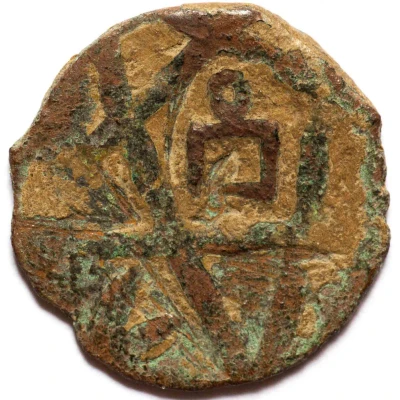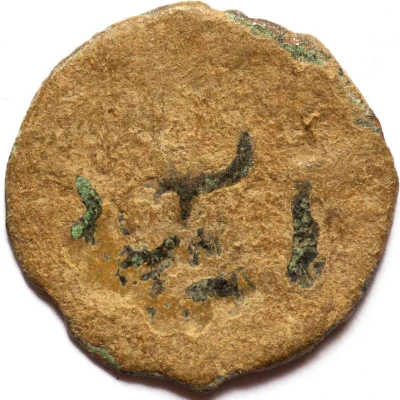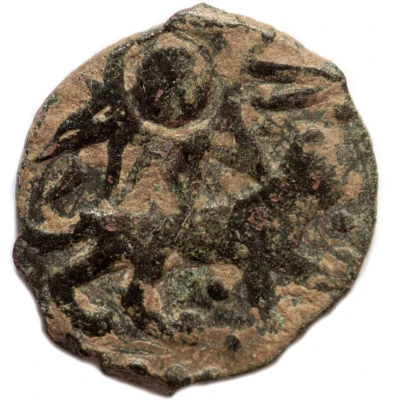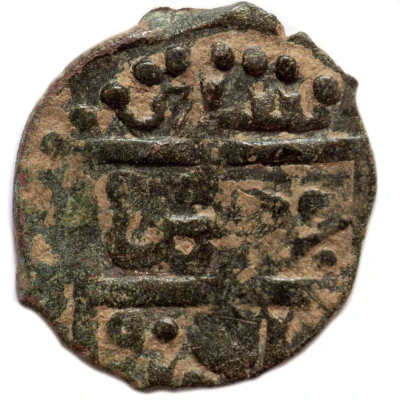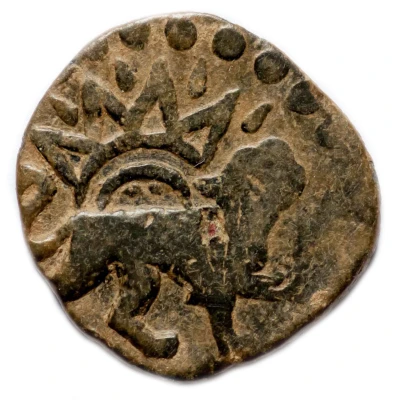
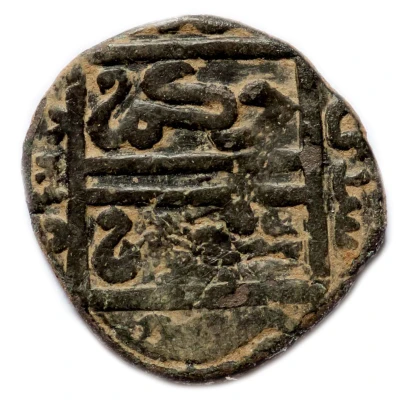

© Grinya (CC BY-NC-SA)
Pul "Animal to the right and the rising sun" - temp. Muhammad Uzbeg Saray al-Jadida
737 (1337) year| Copper | 1.4 g | 16 mm |
| Issuer | Golden Horde |
|---|---|
| Khan | Muhammad Uzbeg (1313-1341) |
| Type | Standard circulation coin |
| Year | 737 (1337) |
| Calendar | Islamic (Hijri) |
| Value | 1 Pul (1⁄16) |
| Currency | Dinar (1227-1502) |
| Composition | Copper |
| Weight | 1.4 g |
| Diameter | 16 mm |
| Thickness | 1.3 mm |
| Shape | Round (irregular) |
| Technique | Hammered |
| Demonetized | Yes |
| Updated | 2024-10-06 |
| Numista | N#177240 |
|---|---|
| Rarity index | 78% |
Reverse
The point circle with a linear square divided horizontally by one or two lines with the Persian legend in the upper and lower halves of it. the output data in 4 segments: minted / city / year/ 737.
Translation:
highest behest
minted in Saray
737
Comment
There are also a lot of imitations of these types of Puls. Typical signs of imitations are:
- no output data in cartouche segments;
- placing simple decorations instead of output data("tick" or "wave" ~)
- progressive distortion of the words in the lower part of the square to complete unreadability (the word in the upper part is always recognizable).
Source
Interesting fact
The Pul coin features an interesting combination of symbols. The animal on the right side of the coin is believed to represent a gazelle, which was a common motif in Mongolian and Central Asian art during that time period. The rising sun on the left side of the coin symbolizes the growth and prosperity of the Golden Horde, which was a powerful Mongol khanate that ruled over much of Eastern Europe and Central Asia during the 13th and 14th centuries. It's interesting to note that the use of these symbols on the coin reflects the cultural and artistic exchange that occurred between different civilizations during the Mongol Empire's reign.
